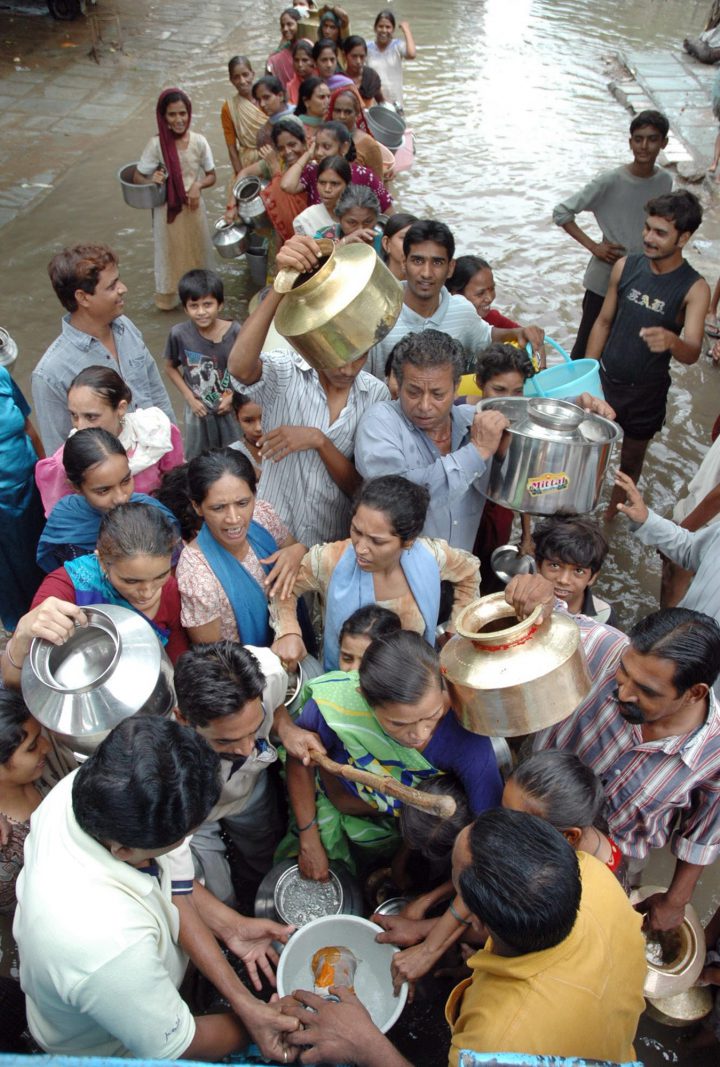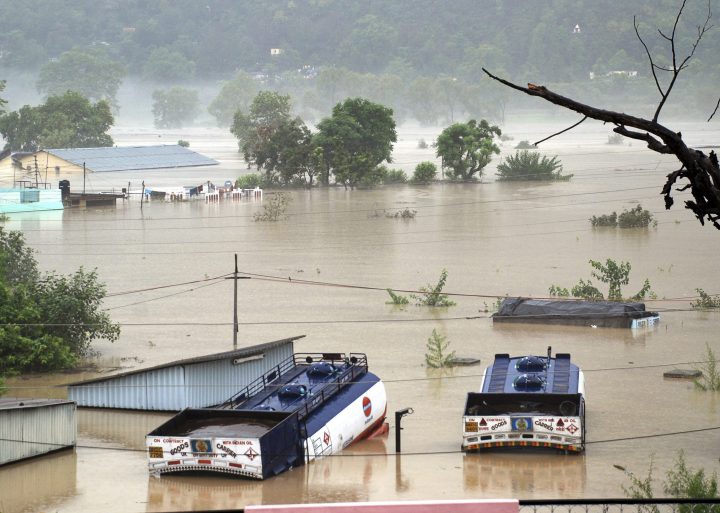Deadly floods are common in some parts of India, particularly during the monsoon season that runs from July to September each year.

The floodwaters are only just beginning to recede in the southern state of Kerala, where nearly 400 people have died since the rains began on Aug. 8.
It was the worst flood in nearly a century for the region, but other parts of India have faced similarly devastating rains.
Here are some of the worst floods to hit India in recent memory.
Gujarat 1979 – Machhu Dam II
The Machhu Dam II failed on Aug. 11, 1979, releasing the full force of the Macchu River on the town of Morbi.
The disaster in western India caused at least 1,335 deaths, according to the Press Trust of India at the time.
Bihar 1987 – Bhote Kosi River
The state of Bihar has faced several disastrous monsoon seasons over the years, and is historically the most flood-prone state in India, the state government says.
The state is in northeast India, near the Himalayas and the Kosi River system. Approximately 76 per cent of the state’s population lives in areas under recurring threat of flood devastation, according to the state government.
The most devastating flood in Bihar’s recent history occurred in 1987, when a landslide blocked the Bhote Kosi River, causing it to flood and destroy more than 1.7 million homes.
The state government says the flooding killed 1,399 people and 5,302 animals.
Coastal India 2004 – tsunami
Most Indian floods are caused by rainfall, but the 2004 tsunami is still the most destructive water-related incident in the country’s history.
WATCH BELOW: 10 years after the India tsunami
A magnitude-9.0 earthquake under the Indian Ocean on Dec. 26, 2004, triggered a tsunami that devastated southern India.
The government reported 10,749 people killed, 5,640 missing and 2.79 million affected by the wave. It also destroyed 11,827 hectares of crops and ruined the livelihood of 300,000 fishermen.

Get daily National news
Later estimates pegged the death toll at 12,405, according to a followup report conducted by the United Nations, the World Bank and the Asian Development Bank.
The wave struck along the southern coast of India, affecting the states of Tamil Nadu, Kerala, Andhra Pradesh and Pondicherry. India’s Andaman and Nicobar Islands were also affected.
More than 8,000 people were killed in Tamil Nadu, the hardest-hit part of the country.
The Indian government adopted a policy after the disaster of not accepting foreign aid.
Gujarat 2005 – rainfall
Flooding triggered by heavy rains killed more than 131 people in the western state of Gujarat in 2005. More than 175,000 people were also displaced by the rains.
Mumbai 2005 – rainfall
Heavy rain flooded Mumbai, in the state of Maharashtra, in late July 2005.
An estimated 1,094 people were killed in the floods, according to the National Disaster Management Authority.
Bihar 2008 – Kosi River
The Kosi River burst through its embankment on Aug. 18, 2008, sending the full force of the river pouring into Bihar state and neighbouring Nepal.
The central government says 527 people and 19,323 farm animals were killed in the flood. An estimated 222,000 homes were destroyed and 3.3 million people were affected.
Reconstruction costs were estimated to be $1.2 billion, according to a joint report by the state government, the World Bank and the Global Facility for Disaster Reduction and Recovery.
Uttarakhand 2013 – rainfall
The worst weather-related flood in India’s recent history occurred in June 2013, when several days of heavy rain triggered flash floods and landslides in the northern state of Uttarakhand.
The cloudburst struck during the busy tourist season in Uttarakhand, when hundreds of thousands of Hindu pilgrims flock to the area to visit its historic temples. The rain occurred a month before the beginning of monsoon season, catching many by surprise.
An estimated 4,094 people were killed and nearly 1 million were affected by the disaster in Uttarakhand and neighbouring Himachal Pradesh, the government says.
The flooding also caused more than US$3.8 billion in economic losses, according to a disaster assessment conducted by the World Bank and the Global Facility for Disaster Reduction and Recovery.
The military was called in to evacuate more than 100,000 people from mountainous parts of the state, where they had become trapped by the landslides. Many were airlifted to safety.
— With files from the Associated Press














Comments